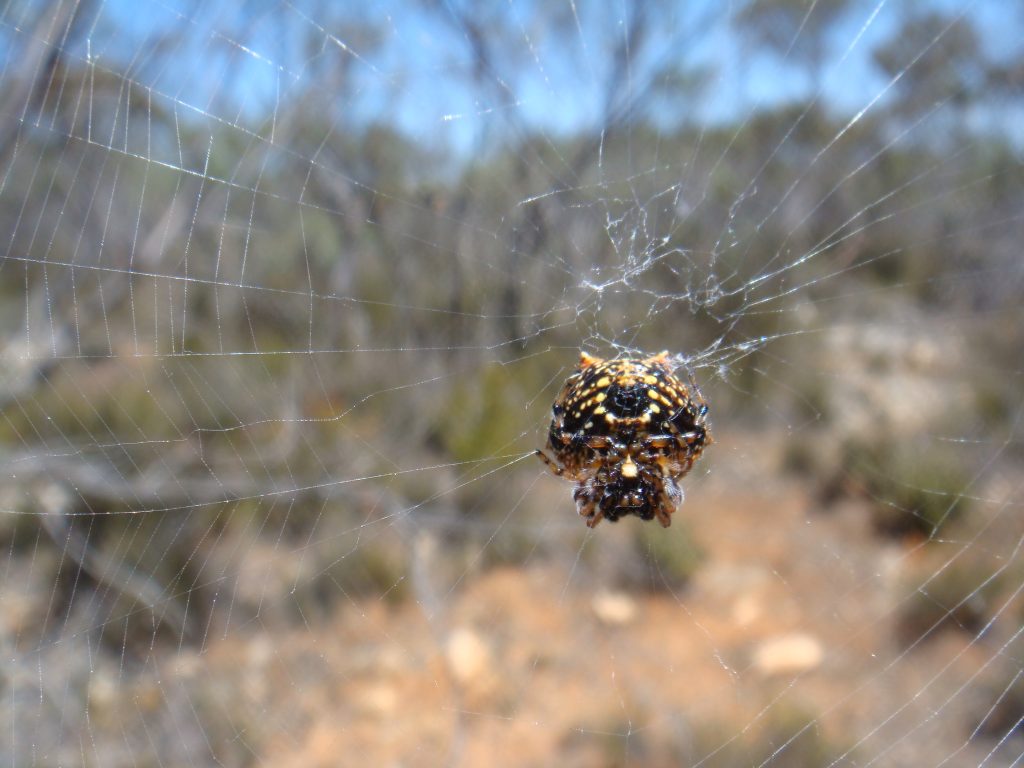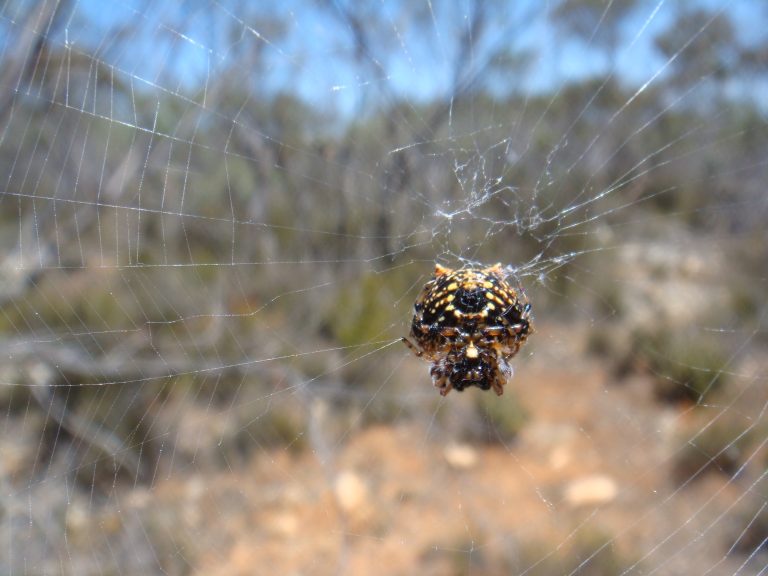
Christmas ……. Spiders

You Know it's Christmas When You See These Guys
As part of our work, Entosearch comes across many fascinating invertebrates while conducting targeted species surveys.
Invertebrates are a vitally important part of the food chain for our native reptiles, birds and mammals, but they are also an important food source for other invertebrates.
Austracantha minax or Christmas Spiders are common across Australia but are predominately seen during the months of November and January – Hence their name.
Christmas spiders are considered to be too small to cause human illness. They are not very aggressive (they rarely bite), and their venom glands are only normally used to subdue prey (Atkinson 2011). If you are bitten by this spider, you will probably feel temporary reactions like redness, swelling, or itching can sometimes be experienced on the bite area. Overall, these spiders, when disturbed, will try to escape by clambering upside-down along their support threads to nearby shelter (Framenau 2014).

Here we see a South-Western Bark Squeaker Cicada being made a tasty meal for a Christmas Spider in South Australia’s Mallee region. It is believed that Christmas Spiders increase their foraging efficiency by attaching their webs to neighbouring webs (Waldock, J. M. and Scharff, N. 2014), and by using the neighbour’s webs, they can extend their webs to other prey-rich areas.
Another unusual behaviour of the Christmas spiders is that they make their support wires visible to larger animals. This is believed to prevent larger animals from inadvertently entering the nets and damaging them.